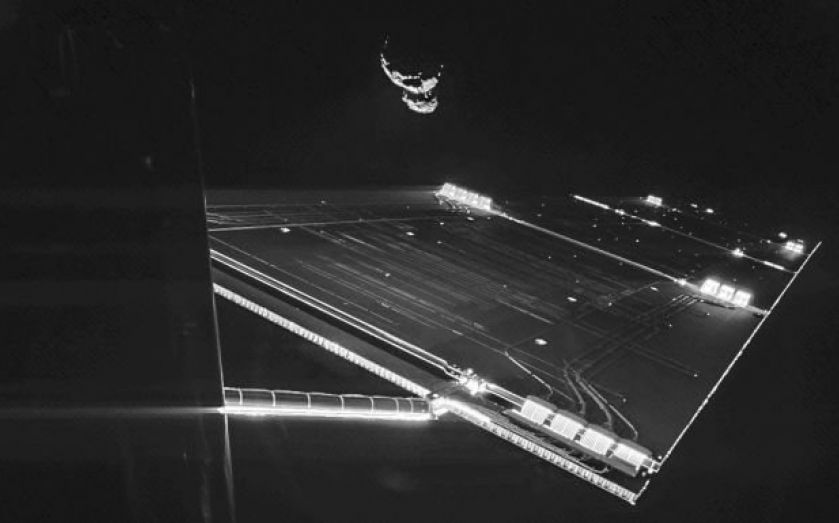| Updated:
Rosetta takes a selfie in space with its new comet friend

The European Space Agency's Rosetta spacecraft has taken time out from its comet-chasing mission to take a selfie.
Named after the hieroglyph-breaking Rosetta Stone from the 1800s, it is hoped that Rosetta will translate some of the secrets of the universe into explanations for the origin of comets, the solar system, and possibly even life on Earth.
After hibernating in deep space for two and a half years, Rosetta has spent the last eight months hurtling towards comet 67P/Churyumov-Gerasimenko. This comet has spent its life travelling so far away from the sun that its composition has remained largely unchanged since the birth of our solar system 4.6bn years ago.
But soon the comet will start travelling towards the Sun for the first time. As it does so its composition will change and material will be released from its surface via high speed jet streams. By analysing the contents of these streams, Rosetta will be able to determine what the comet was made of when it was first formed.
On 7 September, Rosetta took a breather from the task at hand and captured the moment using its CIVA camera, located on one of the landing craft or “philae”.
The final selfie was put together using two images with different exposure times. It shows the edge of the spacecraft and one of its solar wings shining against the backdrop of space. In the distance you can see Comet 67P.

Rosetta takes a selfie (Source: ESA)
Get ready for landing
Rosetta is due to place its philae on the comet in November, and scientists are currently trying to locate the best landing spot.
The task is proving to be more of a challenge than was originally expected, however. Last month five potential sites were selected for being relatively flat and smooth, but as the spacecraft approached the comet, the rocky and jagged surface became more visible.
The team is still working on it, and the final landing site is expected to be revealed on 15 September.

67P/Churyumov-Gerasimenko's surface is rocky and uneven (Source: ESA)